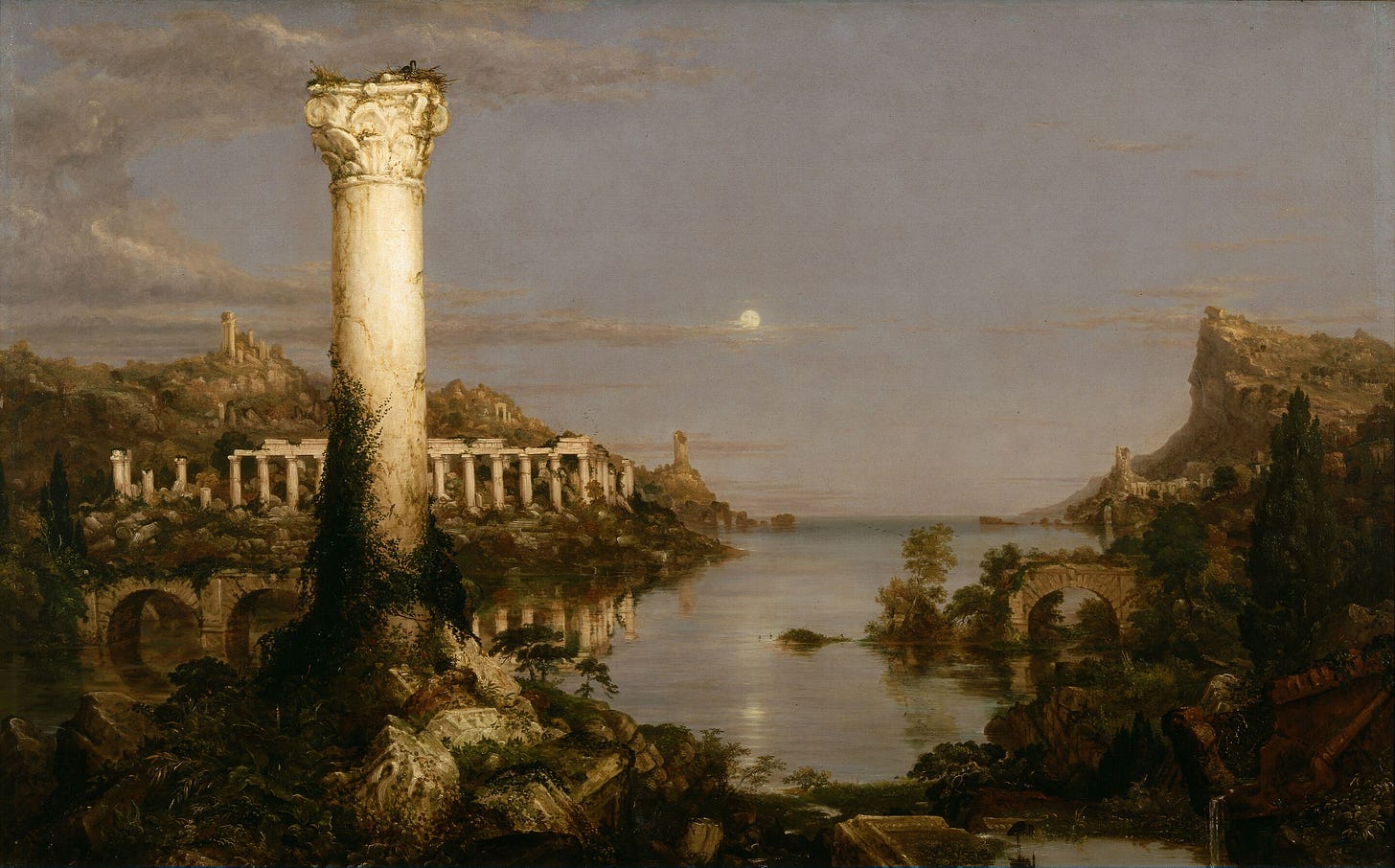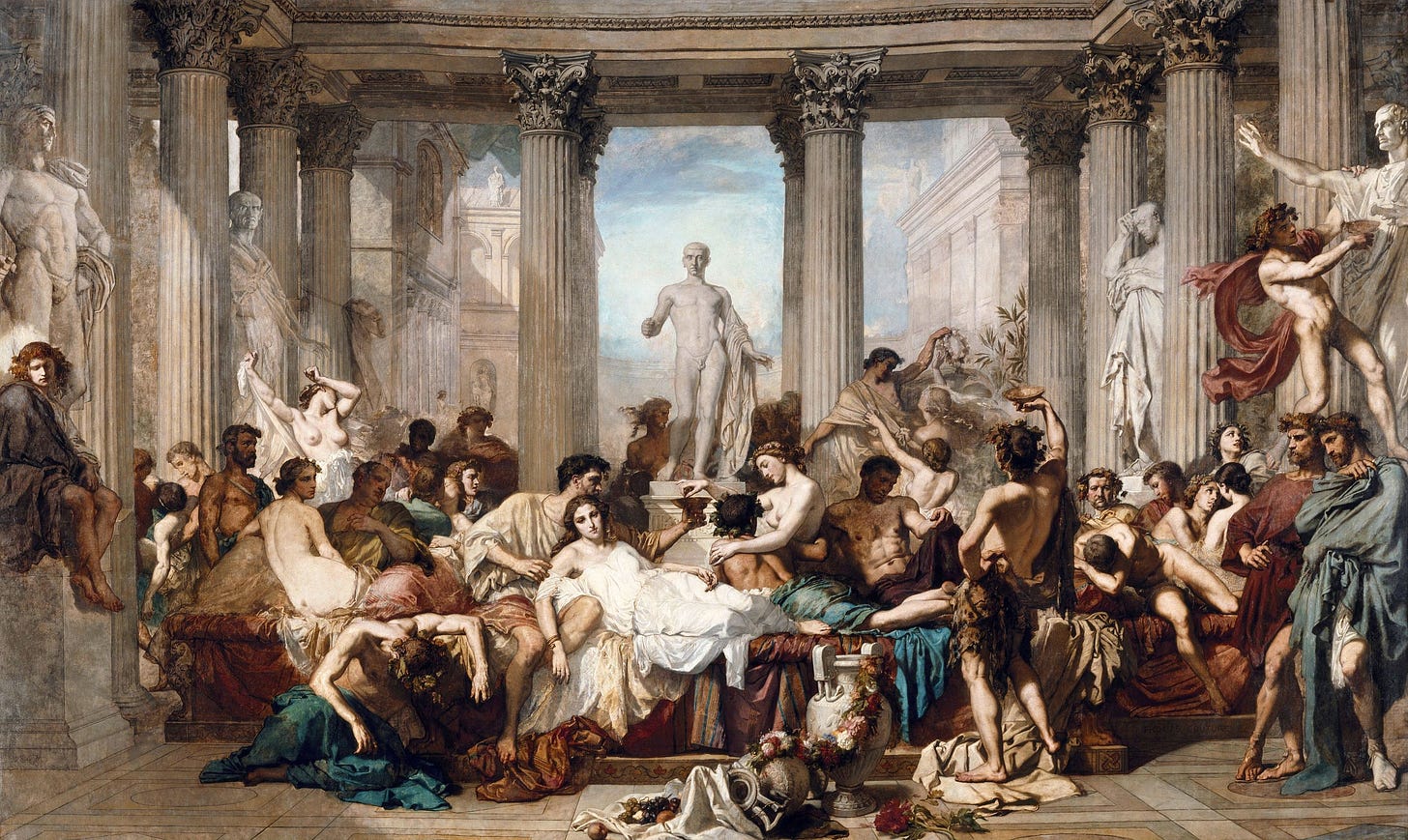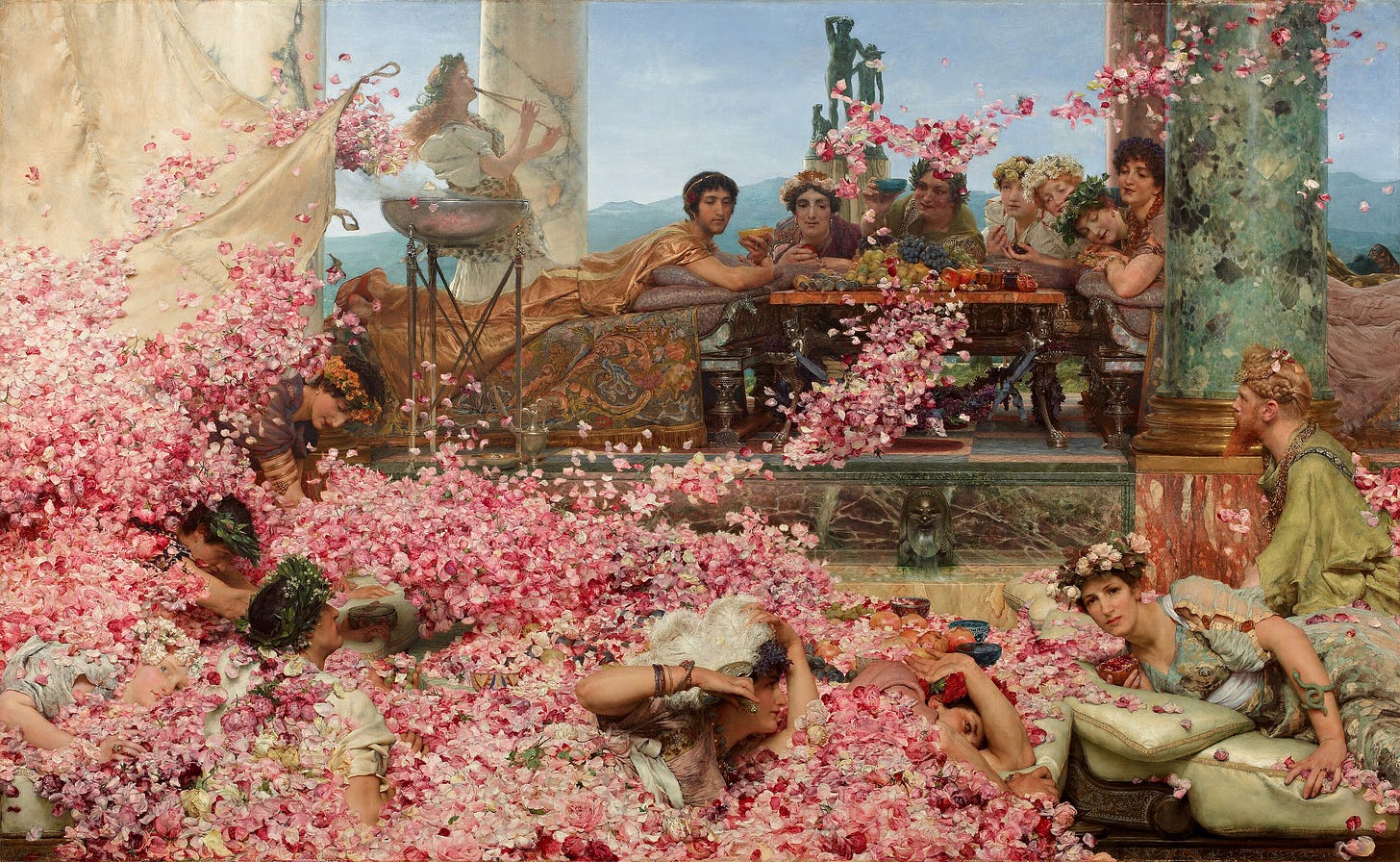Decadent Chronicles 8: Fallen Empire
by Christian Chensvold
Christian Chensvold invites us to view Gladiator II and 19th-century artworks portraying the fall of Rome as mirrors of our civilization’s crisis and as summons to dare to create with our fate.
The juxtaposition of luxurious bacchanals with the brutality of the Colosseum. The once-mighty empire in irreversible decline. A race descended from noble founders losing control over a motley polyglot of a metropolis. Art and poetry becoming fastidiously refined and wildly un-classical. These were the themes of the fall of the Roman Empire that fascinated the writers and artists of the Decadent Movement (1880-1914) as they watched their own aristocracy crumble in the wake of capitalism and democracy.
And all these themes are on full display in Ridley Scott’s Gladiator II, released last year. The film offers a crash course — emphasis on crashing — in the Decadent sensibility and the soul’s obsessions that emerge when faced with the acceptance that the world has been lost. The film helps train the mind to adapt to the new post-Western Civilization reality, to teach you to ride the tiger and surf the Kali Yuga, rather than lament the fact that it’s not 1985 anymore — or 1885.
If you haven’t seen the movie, do not be swayed by the understandable knee-jerk reactions to the presence of Denzel Washington; this is not a blackwash casting of a European historical figure. Washington’s character is believable in the context of the film; it’s certainly believable within a phantasmagoric morality tale in which the Colosseum is filled with salt water into which captive sharks have been released for a naval battle, an over-the-top scene that would have delighted all the fin-de-siècle decadents seeking escapism.
Washington has always had an unlikable screen persona (his contemporary Forest Whitaker is clearly the genius of African American actors and thus the connoisseur’s choice), but this only makes him perfectly cast as a gladiator-trainer who obsequiously rises to power in a corrupt society, saying that only in Rome can a slave rise to usurp the emperor, an ascension that mirrors just about nearly every big-city mayor in the United States.
The degenerate emperor brothers are portrayed perfectly in keeping with the Romans who most fascinated the minds of the Decadents for their extravagances: Caligula, Nero, Tiberius, and Heliogabalus. One of the brothers has a venereal disease leading to madness, a recurrent idea in Decadent literature marking the end of bloodlines. And a corrupt senate applauding the mad emperor’s appointment of a pet monkey as First Consul perfectly mirrors the “clown world” of the West today.
Now, for our history lesson, let’s look at several 19th-century canvasses that address the corruption of Rome, and whose influence can be felt in many of the beautiful and opulent shots in Gladiator II. Thomas Cole’s Course of Empire from 1836 depicts the four civilizational stages known in the internet age as hard times make strong men/strong men make good times/good times make weak men/weak men make hard times. In Evolian terms, this corresponds to the Doctrine of the Four Ages known in Hesiod and the Vedas, and those inclined to the Western Mystery tradition will see the correspondence with the four seasons of the year.
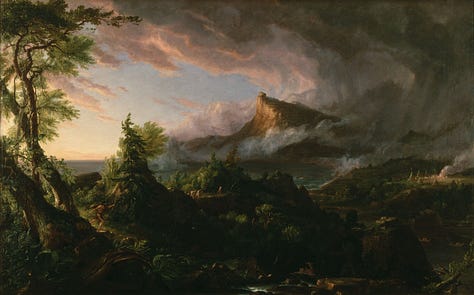
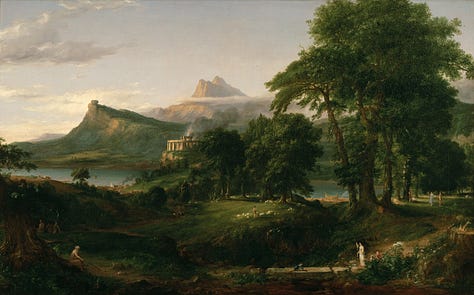
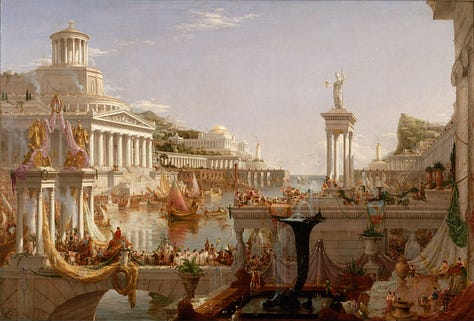
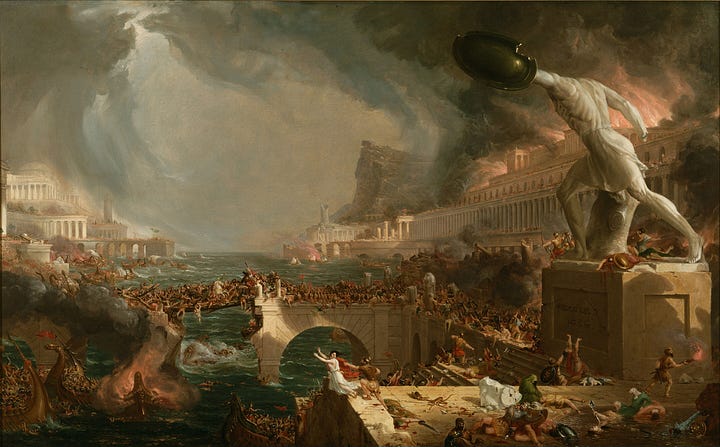
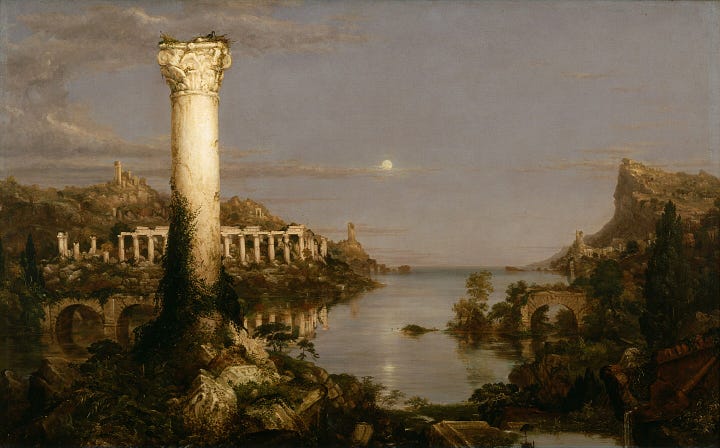
A decade later, in 1847, Thomas Couture unveiled The Romans in their Decadence:
But it’s not until 1888 and the full flowering of Aestheticism and the Decadent Movement that we get Lawrence Alma-Tadema’s The Roses of Heliogabalus, which depicts the languor of Western Civilization racing to its peak.
And now here we are in the 21st century, where you go outside, see your hometown transformed by migration, and watch as your elected politicians take the side of the criminal invaders. Your instinctive reaction is “It’s not supposed to be like this,” but oh how it is — oh how it is. You’re in the decadence, and things are exactly as they should be according to the cosmic law of cause and effect, the rise and fall of races and civilizations, and the regression of the castes.
So what do you do now? If you’re a plebeian and have children or intend to, you’re wondering how to fix society, or escape from it and live off the land. But if you’re like the conquered Numidian king in Gladiator II, you’re not up to what’s in store, you accept your fate and you look forward to the coming meeting with your ancestors in the afterlife. And so we’ll end with one of the most defining texts of the Decadent Movement, Paul Verlaine’s Languor from 1883, a youthful translation from my university days. Obviously, you’ll need to change the hair color of the pillaging blond Visigoths.
I am the Empire in the throes of decadence watching the tall blond Barbarians pass while composing indolent acrostics in a golden style in which the sun’s languors dance. The soul is sick with a heavy boredom. They say there are bloody battles down below. O to be unable, so weak with weary desires, O to not want to flourish a bit in this existence! O to not desire, to not be able to die just a little! Ah, all is drunk! Bathyllus, aren’t you finished laughing yet? Ah! all is drunk, all is eaten, nothing more to say! Only a naive poem to throw in the fire, Only a roving slave who neglects his duties, Only a boredom that attacks as if from nowhere.
READ MORE of the Decadent Chronicles series:



